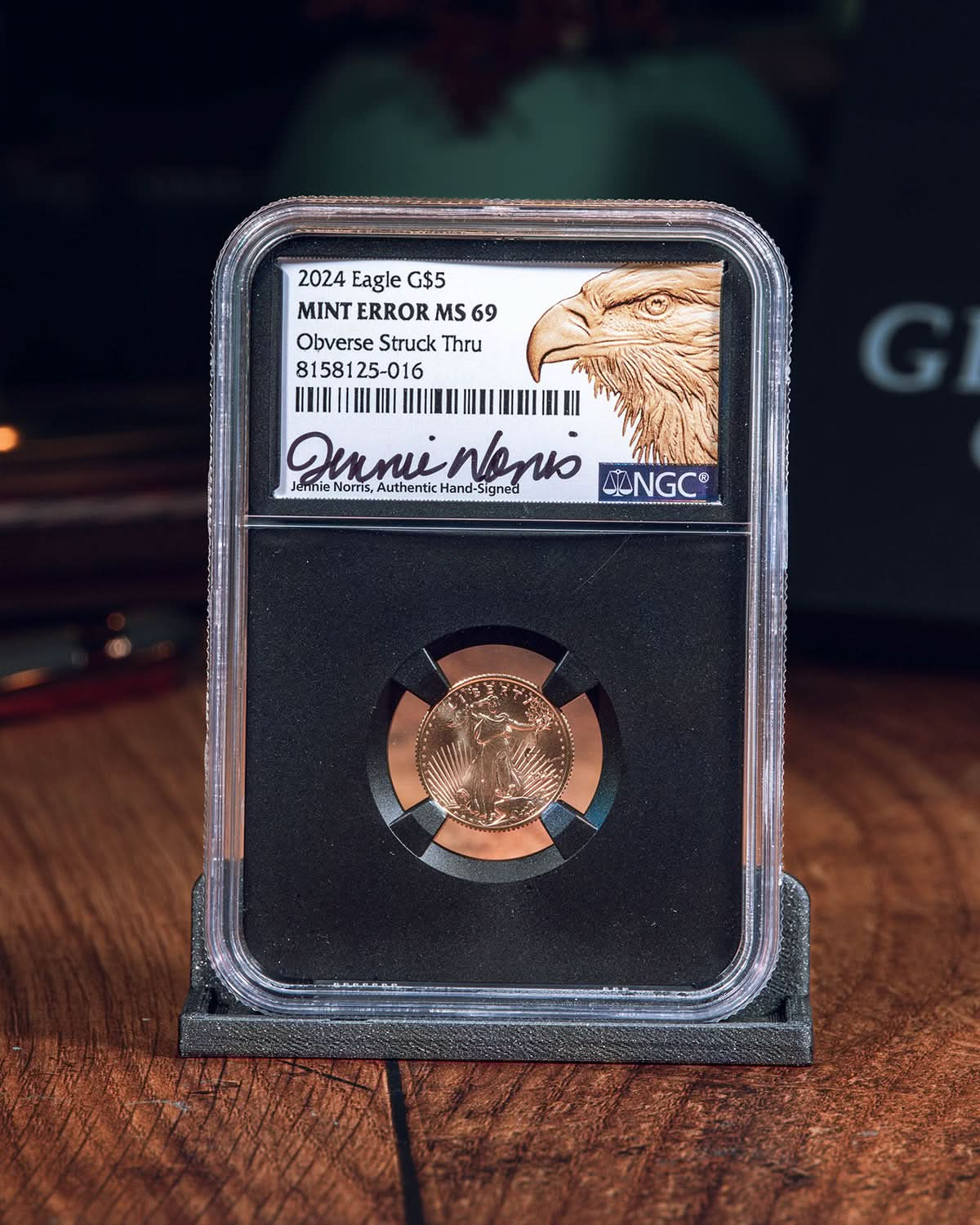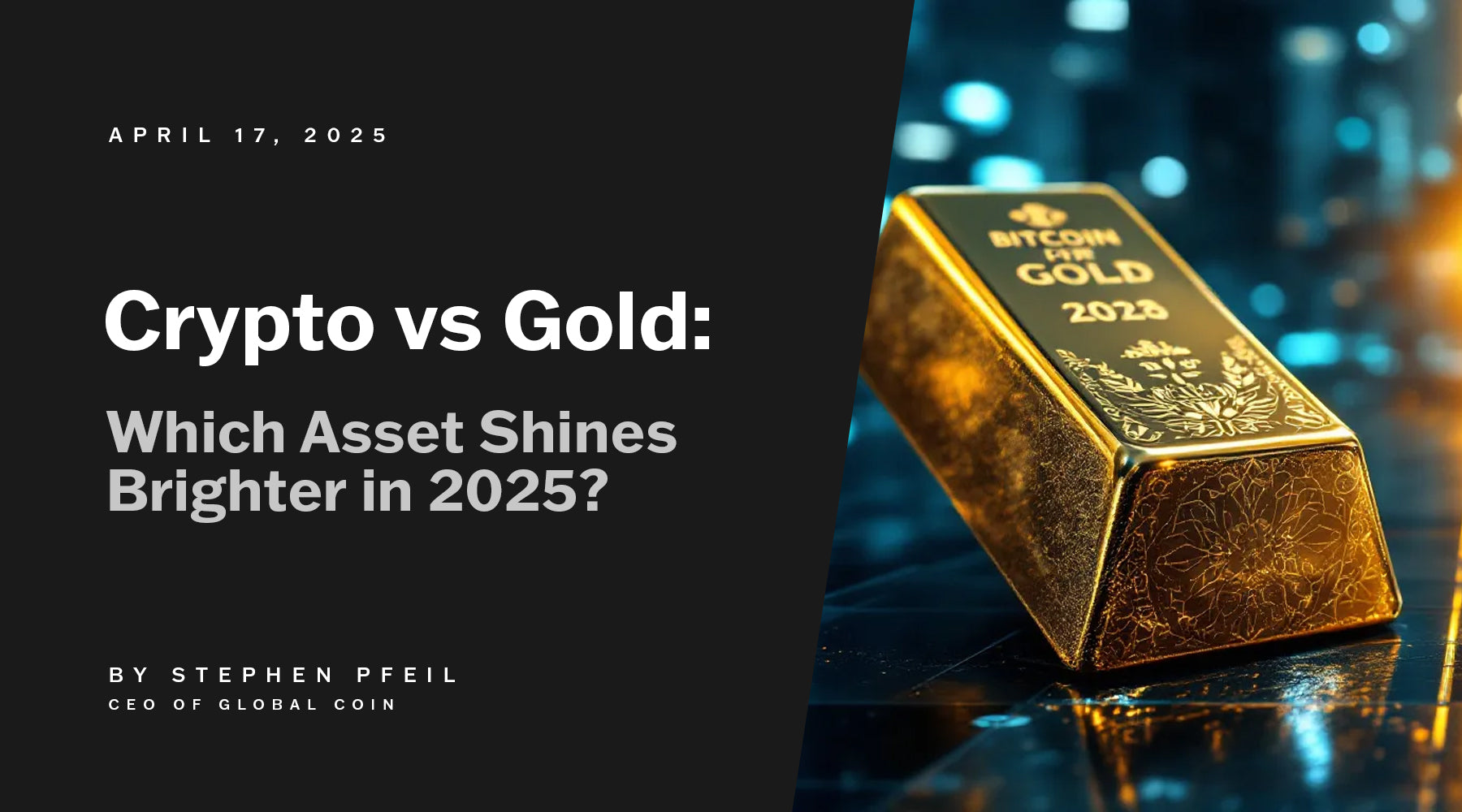Gold and Inflation: The Ultimate Resource on Inflation's Impact for Gold Investors
Gold and Inflation: Executive Summary
Disclaimer:
Global Coin is a dealer of precious metal coins and does not provide investment, financial, or legal advice. Any information provided in this content, including market commentary and insights, is for informational purposes only and should not be construed as investment advice. Investors should conduct their own due diligence and consult with a qualified financial professional before making any investment decisions. Gold and rare coin investments involve risks, and past performance is not indicative of future results.
Key Points
-
Inflation is generally good for gold investors as gold prices often rise during high inflation, helping preserve wealth.
-
Gold acts as a hedge against inflation by potentially increasing in value, protecting purchasing power.
-
Historical data shows gold performed well in the 1970s and early 2000s during inflationary periods, but it's not a perfect hedge.
Direct Answer:
Inflation and Gold Investment
Inflation, the rise in prices of goods and services, can be beneficial for gold investors because gold tends to increase in value during such times, helping to maintain or even grow the real value of their investments. This is because gold is seen as a safe haven, preserving wealth when the value of currency decreases. For example, in the 1970s, when U.S. inflation peaked at 14% in 1980, gold prices soared from $35 to over $800 per ounce, far outpacing inflation.
Why Gold Shines During Inflation
Gold is attractive during inflation because it’s a tangible asset with intrinsic value, unlike paper currency, which can lose value. It also performs well in economic uncertainty, which often includes high inflation, making it a reliable choice for investors looking to protect their wealth.
Historical Performance
History shows gold can be a strong inflation hedge. During the early 2000s, gold prices rose from $250 to $1,900 per ounce from 2001 to 2011, even with lower inflation rates, suggesting it responds to both inflation and other economic factors. You can see historical gold prices at Macrotrends and inflation rates at BLS.
Surprising Detail: Not Always Perfect
It’s interesting that gold doesn’t always perfectly track inflation; sometimes it underperforms or overperforms, influenced by factors like global demand or central bank policies, so it’s not a guaranteed hedge but often effective.
Gold and Inflation: The Ultimate Resource on Inflation's Impact for Gold Investors

This detailed analysis explores whether inflation is beneficial for gold investors, examining the relationship between inflation and gold prices, gold's role as an inflation hedge, historical performance during high inflation, the distinction between physical and paper gold, and practical tips for investing during inflationary periods. It aims to provide a thorough understanding for investors, supported by historical data and expert insights, ensuring a balanced view for both seasoned and novice investors.
Defining Inflation and Its Implications for Investors
Inflation is the general increase in prices of goods and services over time, reducing the purchasing power of a currency. The consumer price index is a measure used to track inflation, and for investors, this erosion can significantly impact the real value of savings and investments, particularly those with fixed returns like bonds. During periods of high inflation, such as the 1970s in the United States, where rates peaked at 14% in 1980, investors seek assets that can maintain or increase value, making gold a popular choice.
Gold, being a tangible asset with intrinsic value, is often considered a hedge against inflation. This means its price tends to rise with inflation, potentially preserving or enhancing the real value of investments. However, the relationship isn’t always straightforward, and gold’s performance can be influenced by various economic factors, which we’ll explore in detail.
The Relationship Between Inflation and Gold Prices

Historically, gold prices have shown a tendency to rise during periods of high inflation, acting as a store of value when currency depreciates. Governments' fiscal decisions, such as money creation and adherence to the gold standard, impact inflation and financial stability. Let’s examine specific periods:
-
1970s Inflation in the US: From 1970 to 1980, the U.S. experienced significant inflation, averaging around 7.4% annually. During this decade, gold prices increased from approximately $35 per ounce to over $800 per ounce, a more than 22-fold increase. To put this in perspective, over 10 years, inflation would roughly double prices (calculated as (1.074)^10 ≈ 2.1), but gold’s price increase far outpaced this, suggesting a strong correlation during high inflation.
-
Early 2000s: From 2001 to 2011, gold prices rose from about $250 per ounce to over $1,900 per ounce, a 7.6-fold increase. During this period, U.S. inflation averaged around 2.5% annually, leading to a total increase of about 28% over 10 years (calculated as (1.025)^10 ≈ 1.28). Here, gold’s price increase significantly outpaced inflation, even though inflation rates were lower, indicating gold’s responsiveness to both inflation and other economic factors like global demand.
However, studies, such as one by the Federal Reserve Bank of St. Louis in 2011, suggest that gold does not provide a consistent hedge against inflation over the long term, with varying correlations depending on the period. This suggests that while gold often performs well during inflation, it’s not a perfect hedge, and its price can be influenced by expectations of future inflation, speculative trading, and macroeconomic conditions.
For historical data, you can refer to Macrotrends for gold prices and BLS for inflation rates, which provide charts showing these trends over time.
Why Gold Shines in Times of Economic Uncertainty
Gold’s appeal during economic uncertainty, which often includes high inflation, stems from its role as a safe haven asset. The idea that gold remains a critical asset amidst financial uncertainty is widely accepted. When economies face instability, whether due to inflation, recession, or geopolitical tensions, investors turn to gold to protect their wealth. This increased demand can drive up prices, making gold a reliable performer in turbulent times.
For instance, during the 2008 financial crisis, despite relatively low inflation, gold prices increased as a safe haven, reaching over $1,000 per ounce by 2009. This shows that gold’s performance isn’t solely tied to inflation but also to broader economic uncertainty, where inflation is one component. The perception of gold as a store of value, not subject to the same risks as paper currency, enhances its attractiveness during such periods.
Understanding Gold as an Inflation Hedge

Gold is considered an inflation hedge because its price tends to rise with inflation, thereby preserving or increasing the real value of investments. This is particularly important during high inflation, as it helps maintain purchasing power. For example, if inflation is 10% annually and gold’s price increases by 15%, the real value of your gold investment grows, offsetting the loss in currency value.
The government's ability to print more money during periods of rising prices can lead to devaluation and economic uncertainty. In contrast, gold is seen as a reliable asset that retains value and acts as a safeguard against inflation.
However, it’s crucial to note that gold’s performance as a hedge isn’t guaranteed. There have been periods, such as the late 1990s, where gold prices remained flat despite rising inflation, suggesting that other factors, like interest rates or dollar strength, can influence its price. Therefore, while gold can be a useful tool in protecting against inflation, investors should view it as part of a broader strategy, not a standalone solution.
Historical Examples of Gold Performance During High Inflation
To illustrate gold's performance, let's look at specific historical examples with supporting data:
-
1970s US Inflation: As mentioned, inflation peaked at 14% in 1980, and gold prices rose from $35/oz in 1970 to $800/oz in 1980. This is evident in historical charts, such as those at Macrotrends, showing a steep upward trend during this period. Inflation data can be cross-referenced at BLS, confirming the high rates.
-
Early 2000s Global Inflation: From 2001 to 2011, gold prices increased from $250/oz to $1,900/oz, outpacing inflation, which averaged 2.5% annually in the US. Charts at Trading Economics show this rise, correlating with periods of economic growth and inflation concerns.
-
2024 -2025 Inflationary Period: From 2024 -2025 Gold outpaced the S & P 500 increasing 50% from about $2000 to a recent high of $2950.
These examples highlight that gold often performs well during inflationary periods, but the extent depends on the economic context, with charts providing visual evidence of these trends.
How Inflation Impacts Physical Gold vs. Paper Gold
-
Physical Gold: This includes gold bars, coins, and other tangible forms. During inflation, physical gold retains its intrinsic value, as it's not subject to the same risks as currency. Its price often rises with inflation, making it a direct hedge. For instance, during the 1970s, physical gold coins like the American Gold Eagle saw significant price increases, preserving value.
-
Paper Gold: This encompasses gold investments like futures, options, and gold mining stocks. While tied to gold prices, paper gold can be more volatile due to market speculation and counterparty risk. During inflation, if there's a discrepancy between paper and physical gold markets, paper gold might not track perfectly. For example, during the 2008 crisis, gold futures saw volatility, while physical gold remained more stable, suggesting physical gold is preferred during high inflation for its direct value.
The distinction is important, as physical gold offers lower risk during inflation, while paper gold can provide leverage but with added volatility, influenced by market dynamics and inflation expectations.
The Role of Gold in Protecting Purchasing Power

Gold helps protect purchasing power by potentially increasing in value as inflation rises. This means that even as the cost of goods and services increases, the value of your gold investment can keep pace or grow, allowing you to maintain your standard of living. For example, if inflation is 5% annually and gold's price increases by 7%, your investment's real value grows, offsetting inflation's impact.
However, historical data shows that gold's price doesn't always perfectly track inflation. There are times, like the late 1990s, when gold underperformed relative to inflation, suggesting it's not a guaranteed hedge but often effective based on historical trends, particularly during high inflation periods like the 1970s.
Why Inflation-Proofing Your Portfolio Matters
Inflation can erode the value of savings and investments, especially those with fixed returns like bonds, which lose real value as prices rise. By including assets that can hedge against inflation, such as gold, you can safeguard your portfolio's real value and ensure long-term financial stability. This is particularly crucial during periods of sustained high inflation, where traditional investments may struggle to keep up, making gold a vital component for diversification.
Tips for Investing in Gold During Inflationary Periods
To leverage gold during inflationary periods, consider the following strategies recommended by legendary investors like Ray Dalio:
-
Buy Physical Gold: Purchase gold coins or bars from reputable dealers, such as those certified by the Professional Coin Grading Service (PCGS), to ensure authenticity. This provides direct ownership and can be a straightforward way to hedge against inflation.
-
Gold Exchange-Traded Funds (ETFs): Invest in gold ETFs, like the SPDR Gold Shares (GLD), which track the price of gold and offer liquidity and lower costs compared to physical gold, suitable for investors seeking exposure without handling assets.
-
Gold Mining Stocks: Consider stocks of gold mining companies, which can provide exposure to gold prices plus potential dividends and growth, though they carry additional risks like operational costs.
-
Diversify Your Portfolio: While gold is valuable, maintain a diversified portfolio including other inflation hedges like real estate or commodities to manage risk effectively, ensuring a balanced approach to inflation-proofing.
These tips should be tailored to individual risk tolerance and investment goals, with an understanding that gold's performance can vary based on market conditions.
Protecting Wealth In Uncertain Times
At Global Coin, we provide tangible, rare, high-value gold coins—proven assets that may preserve purchasing power during inflationary periods. While fiat currencies lose value as inflation rises, gold has historically acted as a safe-haven asset, increasing in price when economic uncertainty erodes the strength of paper money.
From the 1970s to the early 2000s, gold prices surged during inflationary cycles, outpacing traditional investments. However, not all gold is created equal—physical gold holds intrinsic value, free from the counterparty risks and speculative volatility associated with paper gold (ETFs, futures, and derivatives). By investing in real, collectible gold coins, high-net-worth investors can diversify portfolios, hedge against inflation, and build lasting generational wealth.
At Global Coin, we specialize in exclusive access to investment-grade gold coins, ensuring our clients hold authentic, scarce, and historically significant assets. In times of rising inflation, trust in what you can hold—real gold, real value, real security.
Conclusion and Investment Implications
Inflation is generally beneficial for gold investors, as gold tends to perform well during inflationary periods, preserving or increasing the real value of investments. Historical data, such as the 1970s and early 2000s, supports this, with gold prices often outpacing inflation. However, it's not a perfect hedge, and its performance can be influenced by other factors like economic uncertainty and market demand. By including gold in a diversified portfolio and following strategic investment tips, investors can leverage its potential to protect against inflation, ensuring long-term wealth preservation.
Key Citations








Leave a comment
This site is protected by hCaptcha and the hCaptcha Privacy Policy and Terms of Service apply.